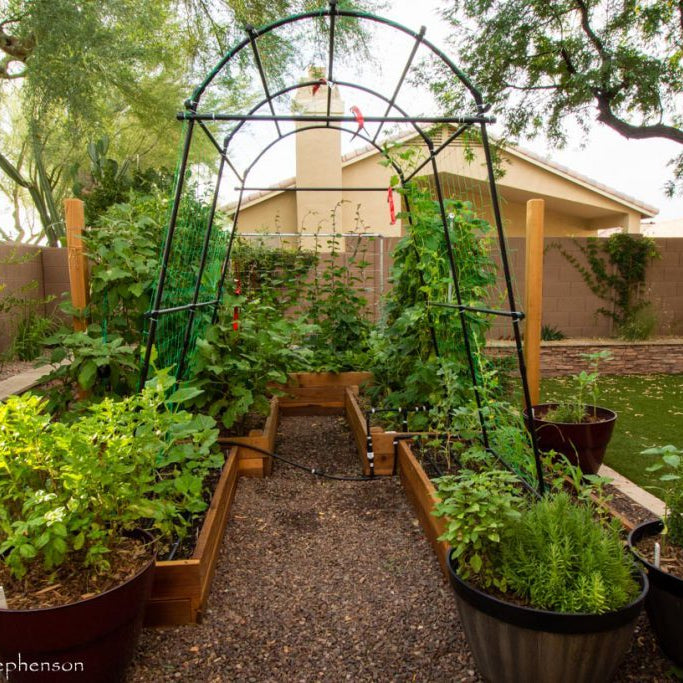
Available 24/7
Available 24/7

Growing chilies at home is a rewarding experience 🌿, especially when you have limited space!
Chilies are among the easiest crops to grow in containers, and they don't require a lot of special care. All you need is a sunny spot, the right soil, and some basic gardening knowledge 🌞.
This guide will help you grow your own spicy harvest in your backyard, balcony, or even windowsill 🌱. So, let's dive into how to grow chillies in containers and enjoy fresh, homegrown chilli peppers all year round!
Chilies belong to the Capsicum genus and come in a variety of shapes, sizes, and heat levels 🔥. From the fiery Carolina Reaper 🌶️, the hottest chili in the world according to the Guinness World Records, to the mild Cherry Pepper 🍒, there's a chili for everyone.
Whether you prefer your chilies extra spicy or just a mild touch of heat, growing them in containers is a great way to have fresh chilies at your fingertips whenever you need them.
In India, chilies are an essential part of daily life, especially in cuisine. Known as 'Mirch' in Hindi, these peppers are used to add spice and flavor to almost every dish 🍲.
Since they were introduced to India by the Portuguese in the 16th century, chilies have become an integral ingredient in traditional cooking. Not only do they enhance the taste, but they also pack a punch with their health benefits, including high vitamin C content and natural antioxidants.
Buy Chilly Red - Organic Vegetable Seeds | View Details 🌱
Chilies come in a range of varieties, each with its own unique flavor and heat level 🌶️. In India, popular varieties include the Bhut Jolokia (Ghost Pepper), Jwala Chili, Guntur Chili from Andhra Pradesh, Byadagi from Karnataka, and Naga Viper from the northeast 🔥.
Some chilies also come in stunning colors such as red, yellow, purple, and even black. 🌈 Varieties like the Cherry Bomb, Rounded Black, and Purple Princess chilies add visual appeal to your garden as well as flavor to your meals!
Whether you're a fan of spicy food or not, growing your own chilies allows you to experiment with different types of chili peppers 🌶️ and pick the ones that best suit your taste.
Growing chilies in containers at home can be an easy and fun way to enjoy fresh chilies without stepping out to buy them. With just a little bit of care and attention, you’ll have a thriving chili plant on your hands. 🌿
Before you start planting, you'll need to purchase chili seeds. You can either get them from your local nursery or buy them online from a reputable seed supplier 🌱.
It's best to purchase seeds from a trusted source to ensure they’re of high quality and have been properly treated for optimal germination. You can also save seeds from chilies you’ve eaten at home, but store-bought seeds generally have a higher germination rate. 🌾
When choosing chili seeds, you can opt for well-known varieties like Aji Lemon, Guntur Chili, Naga Viper, or Bhut Jolokia 🌶️. You can also explore colorful options like the Cherry Bomb, Purple Princess, or Rounded Black Chili. 🌸
The different colors and shapes will add a beautiful variety to your garden! Not to mention, having different types of chilies will ensure you have a great selection of flavors and heat levels for your cooking 🌶️🍲.
Buy Hot Pepper Seeds | View Details 🌶️
To grow chilies successfully, it’s important to pick the right location for your container. Chilies need at least 6 hours of sunlight per day 🌞 to thrive, so choose a sunny spot in your garden or place your container in a well-lit balcony or near a window with good light exposure. 🌱
If you live in a place with limited natural light, consider using grow lights 🌟 to help your plants get the light they need for healthy growth.
Chilies are quite hardy, but they do need well-draining soil to grow successfully. For the best results, mix your soil with rich compost or fine vermiculite to create a loose, nutrient-rich medium. 🌿
You can even use seed compost to ensure your plants get the right amount of nutrients. It's important to water the soil before sowing and keep it consistently moist throughout the growing process 💧. Watering the chilies once a day (unless it’s raining) should be enough, but avoid waterlogging as it can lead to root rot.
Once your chili plants have grown more than four leaves, they can be transplanted into larger containers or moved to the garden. 🌿 Be mindful that chili plants grown indoors might take a while to adapt to the outdoor conditions.
To help them transition, gradually expose them to outdoor conditions for a few hours each day 🌞. This process is known as "hardening off" and will make the plants strong enough to thrive outside.
As your chili plants mature, they’ll start flowering and producing fruit. 🌶️ At this point, you’ll want to make sure to water them lightly to avoid over-watering, which can cause damage to the roots. Using a spray bottle to water your plants is a good option 💧.
Also, harvesting your chilies frequently will encourage the plant to produce even more fruit! The more often you harvest, the more the plant focuses on producing new chilies rather than becoming stressed from overgrown fruit.
Chilies tend to turn red as they ripen, and you can harvest them as soon as they reach full color. 🍅 For dried chilies, leave them on the plant until they shrivel up. You can also dry them in the sun or using a food dehydrator 🌞. After drying, crush the chilies to make your very own chili powder or red chili masala. 😋
Buy Chilli F1 Jwala Pariksha - Vegetable Seeds | View Details 🌶️
In conclusion, growing chilies in containers is a fun and easy way to enjoy fresh, homegrown peppers 🌱. With the right care, sunlight, and a bit of patience, you can grow a variety of chilies right in your backyard or even on your balcony 🏡. Whether you like your chilies mild or extra spicy, there’s no better way to spice up your meals than with fresh chilies from your own garden 🌶️🍴.
Happy gardening!
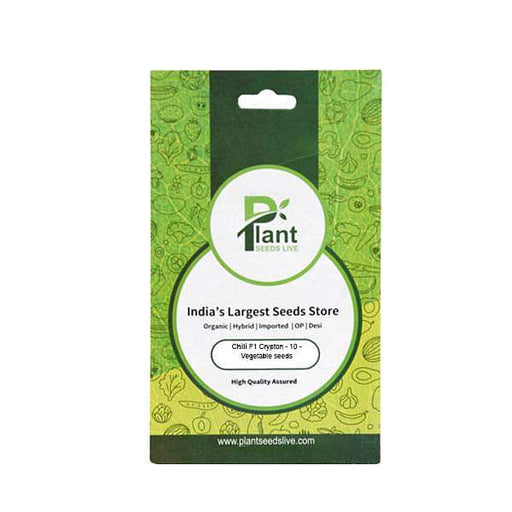
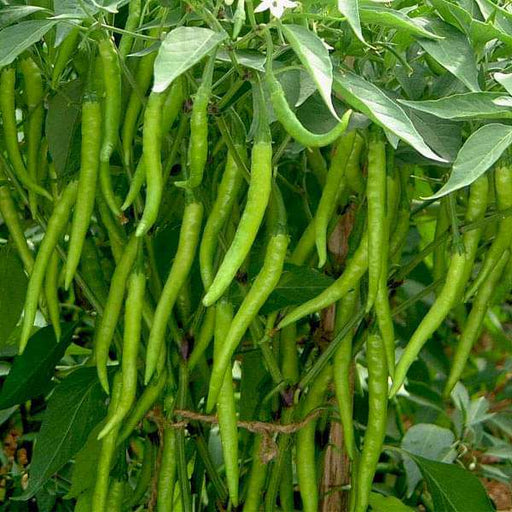 Save 25%
Save 25%
Chilli F1 Crypton - 10 Vegetable Seeds The Chilli F1 Crypton is a premium variety of chili pepper seeds that promises to elevate your gard...
View full details
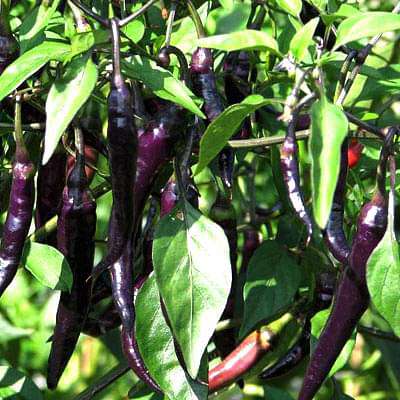 Save 25%
Save 25%
Chilli F1 Hybrid Deep Kali 6 - Vegetable Seeds The Chilli F1 Hybrid Deep Kali 6 is a premium variety of chili pepper seeds, renowned for i...
View full details
 Save 25%
Save 25%
Chilli Surajmukhi - Desi Vegetable Seeds Introducing the Chilli Surajmukhi, a unique variety of desi vegetable seeds that brings a burst o...
View full details
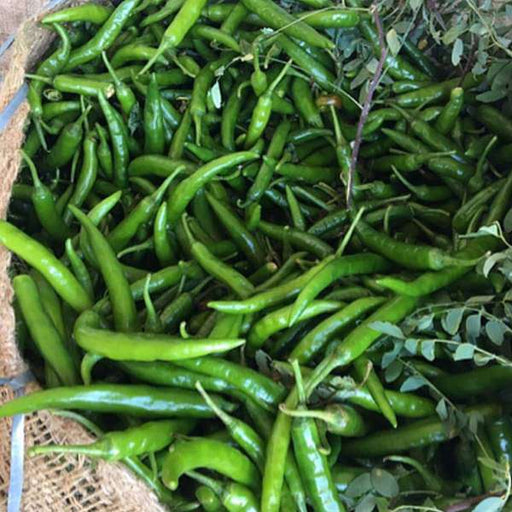 Save 25%
Save 25%
Chilli G 4 - Desi Vegetable Seeds The Chilli G 4 is a premium variety of desi vegetable seeds, specifically bred for its vibrant flavor an...
View full details
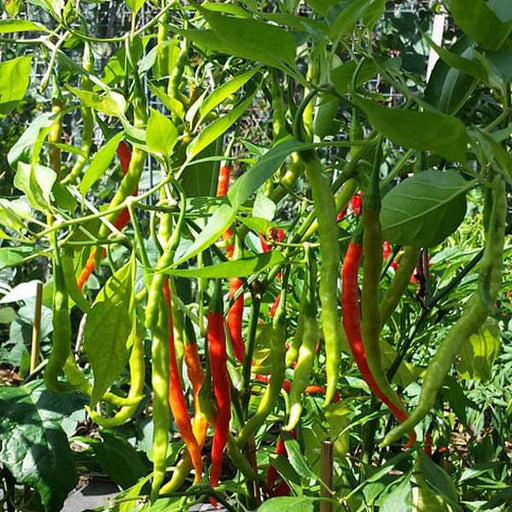 Save 25%
Save 25%
Chilli Jwala - Desi Vegetable Seeds Chilli Jwala, a staple in Indian kitchens, is renowned for its fiery heat and vibrant flavor. These de...
View full details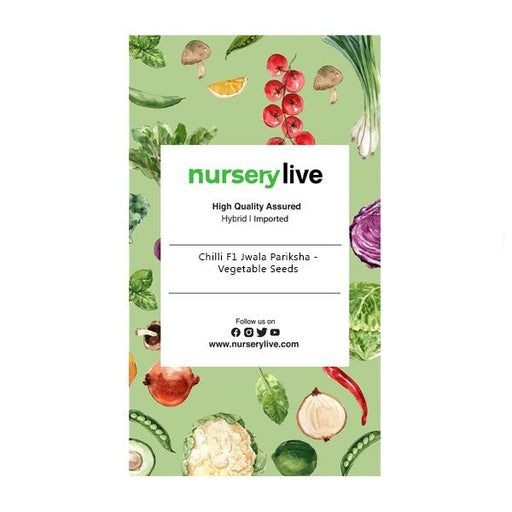
 Save 25%
Save 25%
Chilli F1 Jwala Pariksha - Vegetable Seeds The Chilli F1 Jwala Pariksha is a premium variety of green chili seeds, renowned for its except...
View full details
 Save up to 15%
Save up to 15%
Peace Lily, Spathiphyllum - Plant The Peace Lily, scientifically known as Spathiphyllum, is a stunning houseplant celebrated for its elegant white...
View full details
 Save 18%
Save 18%
Combo Constituents Includes the Parijat Tree (Night-Flowering Jasmine), a culturally significant plant with fragrant flowers. Description The Pari...
View full details
 Save 25%
Save 25%
Description Raat Ki Rani (*Cestrum nocturnum*), also known as Night Blooming Jasmine, is a fragrant shrub native to the Caribbean and Central Ameri...
View full details
 Save 25%
Save 25%
Jasminum sambac, Mogra, Arabian Jasmine - Plant Jasminum sambac, commonly known as Mogra or Arabian Jasmine, is a fragrant flowering plant...
View full details
 Save 17%
Save 17%
Rajnigandha, Tuberose - Plant The Rajnigandha, scientifically known as Polianthes tuberosa, is a captivating perennial plant renowned for ...
View full details
 Sold out
Sold out
Citronella, Odomas - Plant The Citronella plant, scientifically known as Cymbopogon nardus, is a tropical grass renowned for its aromatic ...
View full details Save 25%
Save 25%
Damascus Rose, Scented Rose (Any Color) - Plant The Damascus Rose, also known as Rosa damascena, is a timeless symbol of beauty and romanc...
View full details
 Save 35%
Save 35%
Best 6 Plants for Perfect Indoor Garden Transform your living space into a lush oasis with our curated collection of the Best 6 Plants for a...
View full details
 Save up to 50%
Save up to 50%
Mini Succulent Garden Pack Transform your space with our Mini Succulent Garden Pack, featuring a delightful collection of 4 any variety beautiful s...
View full details
 Save 30%
Save 30%
5 Best Fragrant Plants Transform your garden or indoor space into a fragrant paradise with our curated selection of the 5 Best Fragrant Plants. Th...
View full details
 Save 24%
Save 24%
Set of 2 Bonsai Looking Grafted Adeniums Transform your indoor or outdoor space with our exquisite Set of 2 Bonsai Looking Grafted Adenium...
View full details Save 45%
Save 45%
Top 4 Die Hard Succulents Pack Transform your indoor or outdoor space with our Top 4 Die Hard Succulents Pack, featuring a curated selecti...
View full details
 Save 30%
Save 30%
5 Best Indoor Plants Pack Transform your living space into a lush oasis with our '5 Best Indoor Plants Pack.' This carefully curated collection fe...
View full details
 Save 25%
Save 25%
Set of 4 Evergreen Air Purifier Plant Pack Transform your indoor space into a lush, green oasis with our Set of 4 Evergreen Air Purifier Pla...
View full details
Comments
Leave a comment